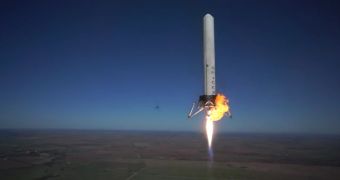SpaceX isn't kidding when it says that it wants to build a fully reusable rocket, one where the vast majority of components can be used for more than just one flight. That's certainly not the case with current rockets, and it would give the company a significant cost advantage.
The Dragon capsule is currently the only one, besides the Russian Soyuz, that can survive re-entry into the Earth's atmosphere.
During the most recent flight of the company's Falcon 9 rocket, the revised and significantly larger 1.1 model, SpaceX tested a method of slowing down the first stage engines once they get separated from the main rocket and before they hit the water below.
The experiment wasn't entirely successful, but the company did learn quite a few valuable lessons. In the meantime, SpaceX is continuing to test its experimental Grasshopper rocket, which is made up of just one Merlin 1D engine instead of the nine the production rocket uses.
However, the Grasshopper was also the first to use the new generation 1D engine which only had its maiden flight in the Falcon 9 v1.1 a couple of weeks ago.
The Grasshopper can take off and land under its own power. In the latest test, on October 7, the VTVL rocket shot up to an impressive 744 meters (2,441 feet) and safely landed back down. That's a significant improvement over the previous record height of 325 meters (1,066 feet), though definitely still not close to what the rocket would have to achieve.
"On Monday, October 7th, Grasshopper completed its highest leap to date, rising to 744m altitude. The view above is taken from a single camera hexacopter, getting closer to the stage than in any previous flight," SpaceX explained. Watch out towards the end of the video as the hexacopter drone makes a surprise cameo appearance.

 14 DAY TRIAL //
14 DAY TRIAL // 